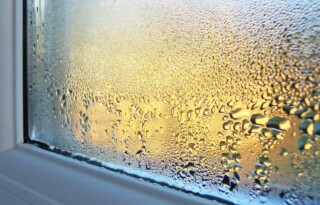We all breathe in air, all day, every day. As we spend most of our time at home or at the office, making sure the indoor air we breathe is healthy is the sensible thing to do. Healthy means without harmful substances, but also having the right air humidity.
The importance of the right air humidity
To a large degree, the air we inhale and exhale is made up of nitrogen and oxygen. In addition to these two elements, air also holds traces of noble gases, carbon dioxide gas and obviously water vapour. The amount of water vapour in the air – which can greatly fluctuate – is what we call relative air humidity. Getting the proportion between air and water vapour right is important for your health and that of your home.
Unduly high air humidity: damp problems
If the air contains too much water (vapour), sooner or later this will end up causing damp problems. This in turn brings mould, condensation and musty smells. You should also reckon with more house dust mites, as they thrive in a damp indoor climate …
Unduly dry air is not ideal either
Too much moisture is not good, but you will not find dry air particularly pleasant either. Complaints associated with unduly low air humidity include a dry throat, prickly cough, dry skin, chapped lips, … It can even give you headaches and reduce your powers of concentration.
The ideal indoor humidity level?
The relative air humidity in your home needs to sit somewhere between 40 and 60 percent.
How do you control your indoor air humidity?
Just about everything you do inside your home has an impact on the indoor air humidity. You can increase the air humidity level by generating water vapour, for instance by doing some cooking or grabbing a shower. Which is obviously neither very practical nor very purposive. Try this instead:
- Make sure you sufficiently aerate your home. It is vital that you drive out water vapour at regular intervals.
- Have an energy-efficient ventilation system D installed. A system D operates according to the principle of heat recovery and will help you create a lasting and perfectly healthy indoor climate.
